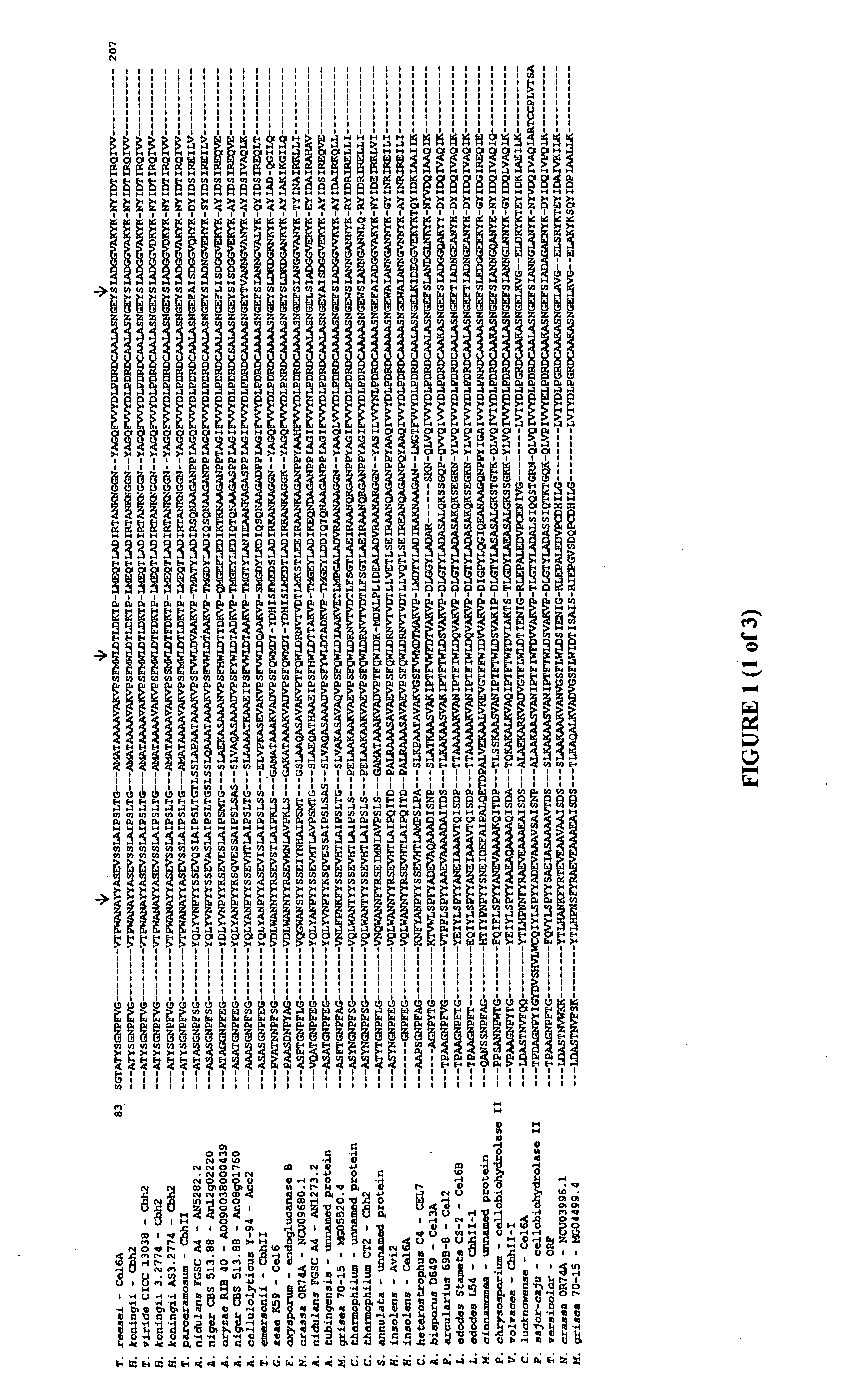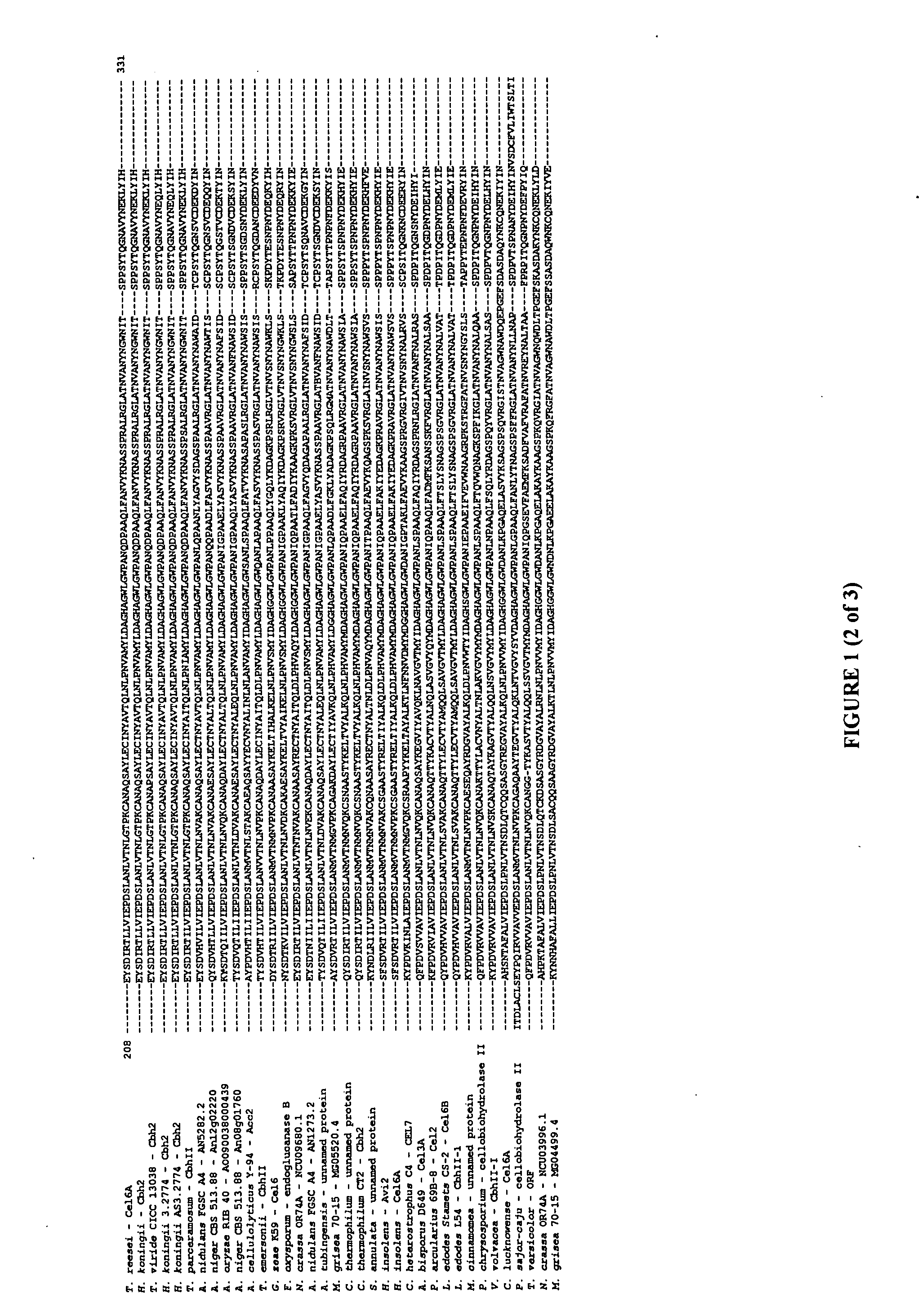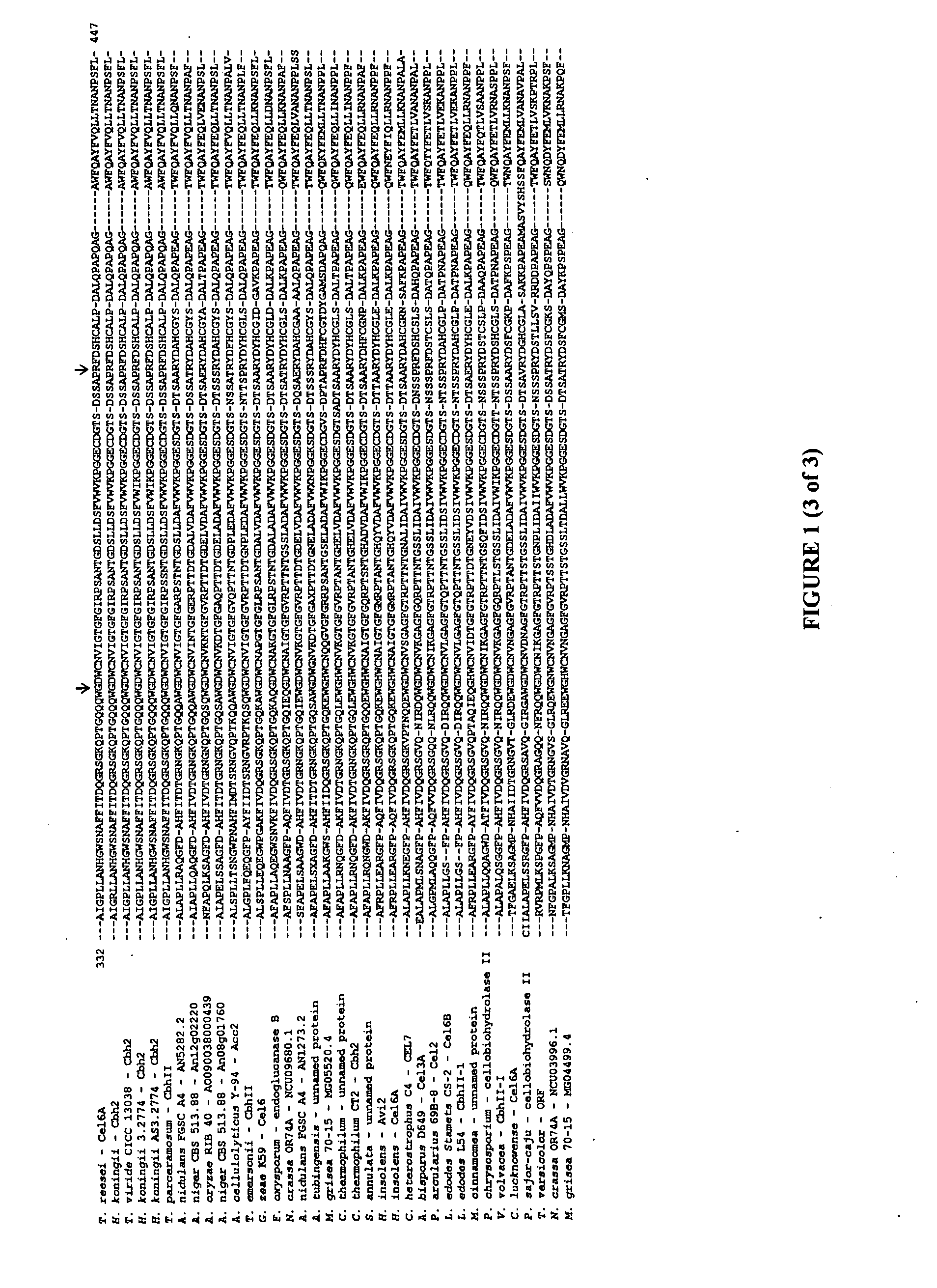Cellulase variants with reduced inhibition by glucose
- Summary
- Abstract
- Description
- Claims
- Application Information
AI Technical Summary
Benefits of technology
Problems solved by technology
Method used
Image
Examples
example 1
Strains and Vectors
[0114]Saccharomyces cerevisiae strain YDR483W BY4742 [14317] (MATα his3Δ1 leu2Δ0 lys2Δ0 ura3Δ0 Akre2) was obtained from ATCC (#4014317). Humicola insolens and Phanerochaete chrysosporium strains were obtained from ATCC® (#22082™ and #201542™, respectively). Escherichia coli strain DH5α (F φ80lacZΔM15 Δ(lacZYA-argF)U169 recA1 endA1 hsdR17(rk−, mk+) phoA supE44 thi-1 gyrA96 relA1λ−) was obtained from Invitrogen. The YEp352 / PGK91-1 vector was obtained from the National Institute of Health. The YEpFLAGΔKpn 10-S413P vector is described in U.S. Patent Application 60 / 841,507. The YEpFLAG-1 vector was obtained from Sigma as a part of the Amino-Terminal Yeast FLAG Expression Kit. The pGEM T-easy vector was obtained from Promega.
example 2
Cloning of the TrCel6A-S413P Gene into the YEp352 / PGK91-1 and Transformation in Yeast
[0115]In order to facilitate cloning using NheI and KpnI restriction enzymes, the unique NheI site at position 1936 of the YEp352 / PGK91-1 vector was blunted using the DNA Polymerase I large (Klenow) fragment to generate YEp352 / PGK91-1ΔNheI. The TrCel6A-S413P gene was amplified by PCR from YEpFLAGΔKpn 10-S413P vector (U.S. Application No. 60 / 841,507) using primers 5′NheCel6A and 3′BglKpnCel6A. In parallel, the yeast α-factor leader sequence was amplified by PCR from the YEpFLAG-1 vector (Sigma) using primers (5′BglAlphaSS and 3′NheAlphaSS) to introduce restriction sites for BglII at the 5′ end and NheI at 3′ end of the amplicon.
[0116]The yeast α-factor leader sequence was isolated by BglII / NheI digestion and a three piece ligation performed with the TrCel6A-S413P gene (isolated by NheI / BglII digestion) and YEp352 / PGK91-1ΔNheI vector (isolated by BglII digestion). The resulting vector YEp352 / PGK91-1ΔN...
example 3
Making Error Prone-PCR Libraries
[0117]Random mutagenesis libraries were generated using two methods: a Mutazyme® II DNA polymerase method and a Mn2+ / biased dNTP mix method. For the Mutazyme® II DNA polymerase method, a series of four independent PCR were performed using 10, 20, 30, and 40 ng of YEp352 / PGK91-1ΔNheI-αss-TrCel6A-S413P vector and the Mutazyme® II DNA polymerase with primers YalphaN21 and 3′PGK-term. The amplification was done for 25 cycles. The four PCR products were pooled and diluted to 10 ng / μL. A second PCR mutagenesis step was performed using 30 ng of pooled PCR product with Mutazyme® II DNA polymerase using the same primers for 30 amplification cycles. The YEp352 / PGK91-1ΔNheI-αss-TrCel6A-S413P vector was digested with NheI and KpnI and the empty vector fragment was isolated. This linear fragment and the final amplicon were transformed simultaneously and cloned by in vivo recombination into yeast strain BY4742 (Butler et al., 2003).
[0118]For the Mn2+ / biased dNTP mi...
PUM
| Property | Measurement | Unit |
|---|---|---|
| Fraction | aaaaa | aaaaa |
| Fraction | aaaaa | aaaaa |
| Fraction | aaaaa | aaaaa |
Abstract
Description
Claims
Application Information
 Login to View More
Login to View More - R&D
- Intellectual Property
- Life Sciences
- Materials
- Tech Scout
- Unparalleled Data Quality
- Higher Quality Content
- 60% Fewer Hallucinations
Browse by: Latest US Patents, China's latest patents, Technical Efficacy Thesaurus, Application Domain, Technology Topic, Popular Technical Reports.
© 2025 PatSnap. All rights reserved.Legal|Privacy policy|Modern Slavery Act Transparency Statement|Sitemap|About US| Contact US: help@patsnap.com



